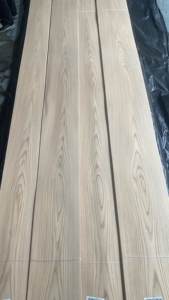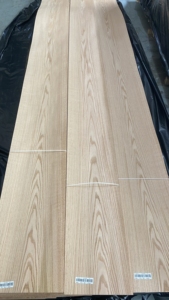
All categories
Featured selections
Trade Assurance
Buyer Central
Help Center
Get the app
Become a supplier

(436 products available)



























There are different types of MDF oak veneer 6mm based on their construction and application. They include:
Standard MDF
MDF or Medium Density Fiberboard is an engineered wood product made from wood fibers, wax, and resin bonded together under heat and pressure. The result is a dense, smooth, and uniform board without knots or grains like solid wood. MDF is known for its workability and is commonly used in cabinetry, furniture, and decorative moldings. There are different types of standard MDF, such as:
MDF boards with enhanced moisture resistance are suitable for humid environments like bathrooms and kitchens. They are not waterproof but offer better moisture protection than standard MDF. They are also known as primed MDF.
These are boards specifically designed to be painted. They come with a smooth, consistent, and primed surface allowing the user to paint with less effort and time.
veneered MDF
This MDF with veneers of real wood on one or both sides. It combines the stability of MDF with the appearance of natural wood. They are also known for their cost-effectiveness and ease of finishing.
Veneer MDF
Veneer MDF is a popular engineered wood product in the market. MDF is a medium-density fiberboard that is widely used in the manufacturing of furniture and cabinetry. It is loved for its workability and smooth surface finish. Like the standard MDF, it is made from wood fibers, wax, and resin.
Veneer MDF has a thin veneer layer of real wood, such as oak, maple, or cherry, bonded to its surface. This veneer layer gives it the appearance of natural wood while maintaining the benefits of MDF. For example, it provides a smooth, stable surface for painting or veneering additional MDF.
MDF veneers are an important part of any construction project. Understanding their features and functions will help to use them more effectively. Here are the features of MDF oak veneer 6mm:
Thickness
6mm thickness MDF oak veneer is an excellent choice for projects that require flexibility and strength. It is ideal for projects where the natural wood finish is required. It is also used in applications where lightweight materials are preferred.
Composed of MDF
MDF is a popular choice among constructors. It provides a smooth surface for veneering. An MDF board is made of wood fibers, wax, and resin. These components are combined to form a dense board through high pressure and heat. MDF boards are known for their consistent density and smoothness.
Veneer Layer
The veneer layer is made of oak wood. An oak tree is a hardwood tree. It is known for its strength, durability, and attractive grain patterns. An MDF oak veneer 6mm adds a natural wood appearance to any surface. It is used in applications where a natural wood finish is required.
Edge Banding
Edge banding is an important feature of MDF oak veneer 6mm. It helps to cover the exposed edges of MDF. This makes the edges look more attractive. Edge banding also helps to improve the durability of MDF oak veneer 6mm. It prevents the edges from getting damaged. It also facilitates a smooth transition from the surface to the edge.
Backer Paper
Some MDF oak veneer 6mm comes with backer paper. Backer paper helps to provide stability to the veneer during handling and installation. It also helps to prevent tears and damage to the veneer layer.
The application of MDF oak veneer 6mm spans various industries and functional areas. Its versatility, coupled with the oak veneer’s aesthetic appeal, makes it a preferred choice for manufacturers across the globe. Here are some common usage scenarios:
Furniture Production
MDF boards with oak veneer are widely used in furniture manufacturing. The 6mm thickness is suitable for items like bedside tables, drawers, and small cabinets. The MDF core ensures the furniture is stable and robust, while the oak veneer provides an attractive finish.
Interior Design and Construction
Interior designers and construction companies use MDF with oak veneer for various functional and aesthetic applications. The 6mm MDF boards can be used as wall panels, creating a cozy, warm atmosphere in residential spaces. They can also be employed as ceiling panels in spaces where lightweight materials are preferred.
Cabinetry
The cabinetry industry relies on MDF with oak veneer for constructing cabinets and drawers. The 6mm thickness is ideal for cabinet doors, providing a combination of stability and a smooth, paintable surface. The oak veneer finish enhances the overall aesthetic of kitchens and bathrooms.
Decorative Elements
MDF with oak veneer is used for various decorative elements in both residential and commercial settings. These include picture frames that blend functionality with aesthetic appeal. The MDF core ensures the frame retains its shape, while the oak veneer adds a touch of elegance. Additionally, the MDF boards can be crafted into decorative moldings and trims that add a refined finishing touch to any space.
Retail Fixtures
In the retail industry, MDF with oak veneer is utilized to create display shelves and racks. The material is stable, ensuring the shelves can hold merchandise without sagging over time. The attractive oak veneer finish enhances the visual appeal of retail spaces, making them more inviting to customers.
DIY Projects
DIY enthusiasts prefer using MDF with oak veneer for various home improvement projects. These include creating custom-made small furniture like stools and side tables. The MDF core is easy to work with, allowing for precise cuts and shapes. The oak veneer finish ensures the end product complements the existing décor.
When planning to buy MDF oak veneer 6mm, consider these factors to ensure the product meets the desired standard and quality. First, determine the purpose. Understand the intended use for the veneer. For instance, if it is for furniture construction, identify the type of furniture to be made, such as cabinets, drawers, or any other item. If it is for a certain project, determine what the project entails and what it requires. Knowing the intended use will help choose MDF with the right thickness and quality.
Veneer quality. Choose MDF with a high-quality oak veneer. This ensures a good finished product. The quality can be classified into grades, with the higher grade MDF being more expensive. Oak veneer is a good choice since it is durable, and the MDF will take on its characteristics.
Thickness. The thickness of the MDF will vary depending on the use. The thicker the MDF, the more stable and durable it will be. When it comes to veneer, 6mm is a reasonably good thickness, and it is adequate for many uses and applications.
Edge treatment. The edges of the MDF may require special treatments, especially if the edges will be visible in the final product. Consider the type of edge treatment the MDF has and whether it meets the required standard.
Size. MDF boards are available in different sizes. When purchasing, ensure the size meets the required standard and that it can be used for the intended purpose. Sometimes, the size of the board will affect the finished product, so consider all that before buying.
Environmental certification. Choose an MDF board with an oak veneer that has environmental certification. This ensures the product is safe and made with materials that are not harmful to the environment. Some certifications include CARB and EPA.
Cost. The cost of the MDF board will vary depending on the quality and the size. When purchasing, it is important to strike a balance between quality and cost to ensure the product is within budget.
Q1: What is the purpose of a veneer?
A1: A veneer is used to achieve an attractive aesthetic finish to a surface or object. For example, a veneer may be used to cover furniture, doors, and cabinets to make them look appealing.
Q2: What does MDF stand for?
A2: MDF stands for medium-density fiberboard. MDF boards are commonly used in construction and woodworking projects.
Q3: What is the difference between solid wood and MDF?
A3: Solid wood is durable and long-lasting. However, it is more expensive and less versatile than MDF. MDF is an engineered wood product, meaning it is created from wood fibers mixed with resin and compressed into dense boards.
Q4: What is a veneer peel-off?
A peel-off veneer refers to the removal of a cover wood layer from the surface of the MDF or plywood substrate. This often happens during construction if the veneer is not properly attached or fixed to the surface it is covering. It can also happen accidentally in case of improper attachment or user negligence.
Q5: What are the disadvantages of using MDF?
A: Some of the disadvantages of MDF include: - High weight: MDF is usually heavier than plywood or particleboard. - Moisture resistance: MDF is susceptible to damage from moisture and water. Therefore, it may not be an ideal choice for areas with high humidity or moisture levels. -Brittleness: MDF can easily break or crack when exposed to a high level of pressure or force.